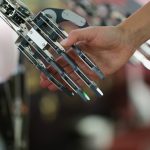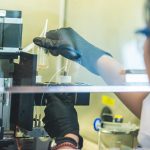Scientists simplify robot imitation of human motioins
Imagine robots that can watch us and then do exactly what we do, in real time. They could help with daily tasks around the...
Chatbots persist in using racial stereotypes despite anti-bias training
In a recent study by researchers from the Allen Institute for AI, Stanford University, and the University of Chicago, it has been discovered that...
AI enhances precision in dark energy understanding
In a groundbreaking study led by UCL, researchers have harnessed the power of artificial intelligence (AI) to delve deeper into the mysteries of the...
Scientists unleash AI’s power to perfectly simulate nature in computer graphics
A team of researchers, including Georgia Tech's Assistant Professor Bo Zhu, has made a huge leap in the world of computer graphics, blending the...
Scientists invent new tool to stop bad AI chat
Chatbots are getting smarter every day, helping us find information, solve problems, and even keep us company.
But there's a challenge: making sure these AI...
Quantum computing: A double-edged sword for copyright laws
Quantum computing, a groundbreaking technology that promises much faster computers, is set to change how we handle copyright law, according to a new study.
This...
What is a GPU? An expert explains the chips powering the AI boom, and...
As the world rushes to make use of the latest wave of AI technologies, one piece of high-tech hardware has become a surprisingly hot...
Beware of fake faces: AI images fool people almost half the time
In a world where seeing used to mean believing, distinguishing between real and computer-generated images is becoming tougher than ever.
A recent study by the...
Scientists unveil breakthrough in 3D-printed skin regeneration
A groundbreaking technique harnessing fat tissue could revolutionize skin regeneration and even hair growth, offering hope for those with facial injuries or hair loss.
Researchers...
The invisible hazards: How people could fool self-driving car sensors
In a world where cars are beginning to drive themselves, a team of researchers from the University of California, Irvine, and Japan's Keio University,...










